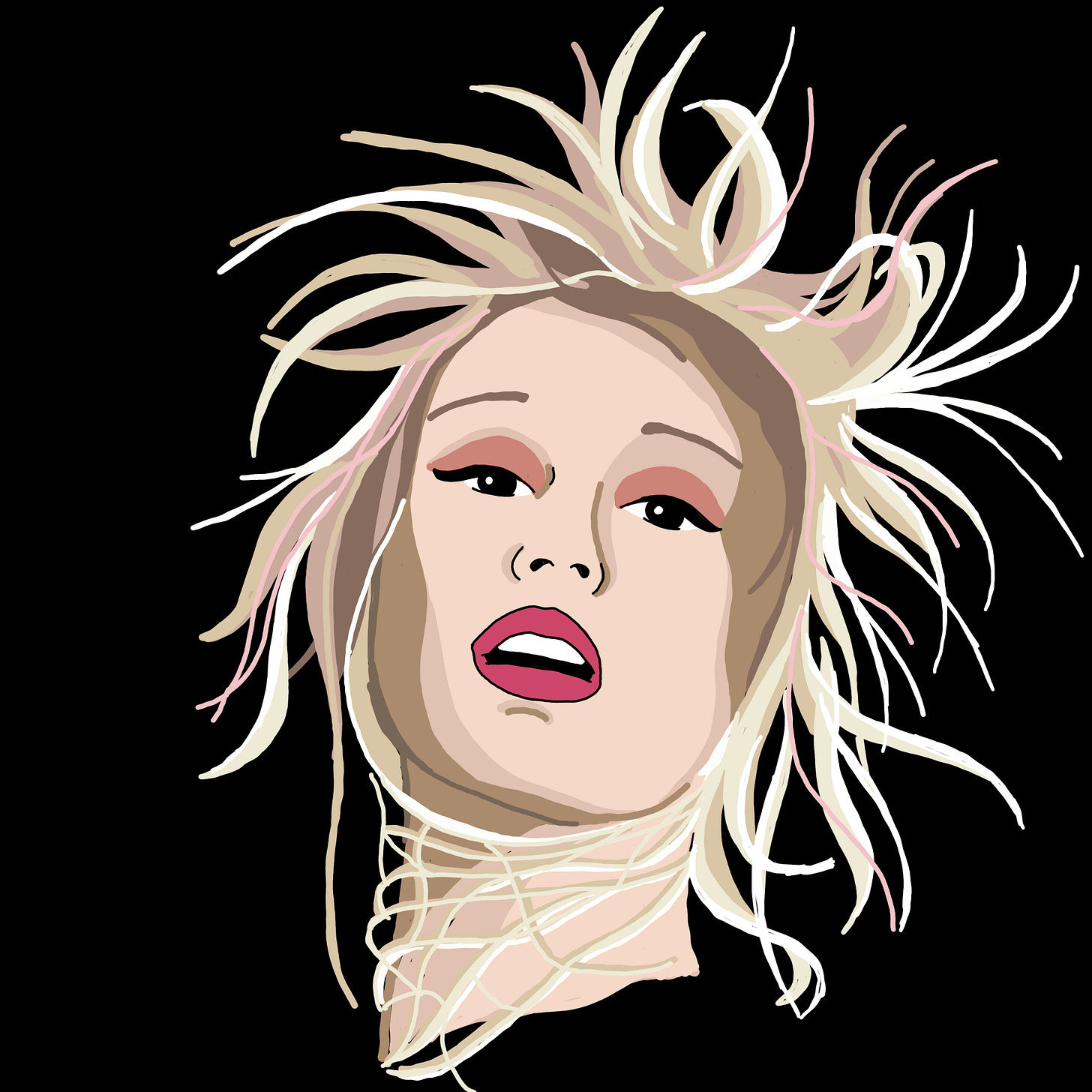One for the Heads: Miley Cyrus's Experimental Turn
Something Beautiful has Minimalism, Jazz, Shoegaze, and ABBA
Listen on Apple Podcasts, Spotify or anywhere you get podcasts
When a pop star releases new music after a career-defining hit, it creates a moment of both excitement and trepidation. After all, where do you go after success? For Miley Cyrus, whose 2023 single "Flowers" dominated charts worldwide and earned her a Grammy, this question looms particularly large. The song represented a personal milestone—a declaration of self-sufficiency after years of public struggles, family rifts, and a challenging divorce. But creative self-actualization presents its own artistic dilemma: what's next once you've found yourself?
The answer, it turns out, is somewhere strange and wonderful.
Cyrus’ singles from her forthcoming album, Something Beautiful, suggest she's entering a bold experimental phase, collaborating with jazz musicians, indie rock producers, and shoegaze guitarists to create music that defies easy categorization. This artistic pivot might surprise casual listeners who know Cyrus primarily through her biggest hits, but a deeper look at her catalog reveals that experimentation has always been part of her musical DNA.

Cyrus Gets Strange
The first track from Cyrus's upcoming album, fittingly titled "Prelude," signals an immediate departure from the glossy disco rhythms of "Flowers." Instead, listeners encounter something that sounds remarkably like 1960s minimalist composition—repetitive patterns that develop slowly, creating a hypnotic effect reminiscent of composers like Philip Glass and Steve Reich.
The comparison isn't incidental. "Prelude" shares unmistakable similarities with Glass's "Two Pages," both featuring layered synthesizers playing descending arpeggios that seem to stretch infinitely into the distance. Even the title carries significant weight, "prelude" being a classical music form dating back to the Baroque era of J.S. Bach, traditionally used to establish a musical world before the main performance begins.
This minimalist approach serves as the perfect backdrop for Cyrus's spoken-word poetry, which explores existential themes: "When following an image from a train, your eyes can't keep the passing landscapes from being swallowed into endless distance." The lyrics speak to life's inevitability and impermanence, with references to "ashes that will fall through your hands and dissolve into air."
The second single, "Something Beautiful," plunges further into unexpected territory. The track opens with a slinky six-eight R&B groove featuring legendary session bassist Pino Palladino, whose distinctive playing recalls his work on D'Angelo's neo-soul masterpiece "Voodoo." This nostalgic rhythm section provides a foundation for jazz-influenced chord progressions that move in unusual ways (A-flat major seven to E-flat major seven to F dominant seven), using harmonies that rarely appear in conventional pop.
What begins as a sultry love song takes a menacing turn with the opening line: "Tell me something beautiful until your lips turn blue." This unsettling image, suggesting either passionate conversation until dawn or something far more morbid, sets the stage for a song full of contradictions. The pre-chorus introduces Motown-style horn arrangements and onomatopoeic lyrics before the track explodes into a heavily distorted, dragging D-minor chorus that feels more like a horror movie soundtrack than a pop single.
Perhaps most surprising is the song's jazz-heavy outro, featuring saxophonists Josh Johnson and Adam Schatz, alongside other stalwarts of the progressive jazz scene. The wailing horns connect thematically to the song's lyrics about "losing breath" while also evoking the spiritual jazz of Alice Coltrane and Pharoah Sanders, music that similarly explored existential themes during the politically charged 1960s.
The third single, "End of the World," initially seems to revert to safer territory with its disco beat and ABBA-like piano stabs (recalling classics like "Dancing Queen"). But even this track subverts expectations. Co-written with members of shoegaze band Alvvays, the song gradually incorporates walls of distorted guitars and unexpected reharmonizations that transform its celebratory chorus into something more complex and nuanced. It's a party song about apocalypse, eschatological Swedish pop, if you will.
The Weird Prehistory of Miley Cyrus
For those paying close attention to Cyrus's career, this experimental turn shouldn't come as a complete surprise. Her catalog reveals an artist who has consistently sought out new sounds and collaborators.
In 2015, she released "Miley Cyrus and Her Dead Petz" with psychedelic rock band The Flaming Lips—a free, 23-track album featuring songs like "Dooo It!" with lyrics questioning "Why there is trees and what the F is love?" This was followed by 2017's "Younger Now," a rootsy Americana record featuring Dolly Parton and the laid-back single "Malibu." By 2019, she had pivoted again with "She Is Coming," which included trap-influenced tracks featuring RuPaul.
What emerges from this musical journey is the profile of an artist with genuinely eclectic taste. Cyrus wants to make every kind of music and isn't afraid to follow her instincts, even when they lead away from commercial certainty. The new singles continue this tradition of exploration while adding surprising depth through their sophisticated compositions and haunting lyrics.
One for the Heads
These singles reveal an artist who's transcended the need for commercial validation. By bringing in jazz saxophonists, shoegaze guitarists, and indie producers while referencing musical icons from Prince to Nirvana, Cyrus is clearly making music for the true enthusiasts, or as jazz musicians would say, "one for the heads."
Perhaps the real revelation isn't that Cyrus has gone experimental, but that we've underestimated her musical range all along. Beyond the Disney star, beyond "Party in the USA," beyond "Flowers," there's always been a restless creative spirit mining different genres. Now, with nothing left to prove, she's free to follow her instincts wherever they lead, even if that's into abstraction, dissonance, and existential contemplation.





I'm still fighting for justice for Plastic Hearts personally
Where’s the Miley Cyrus audio documentary